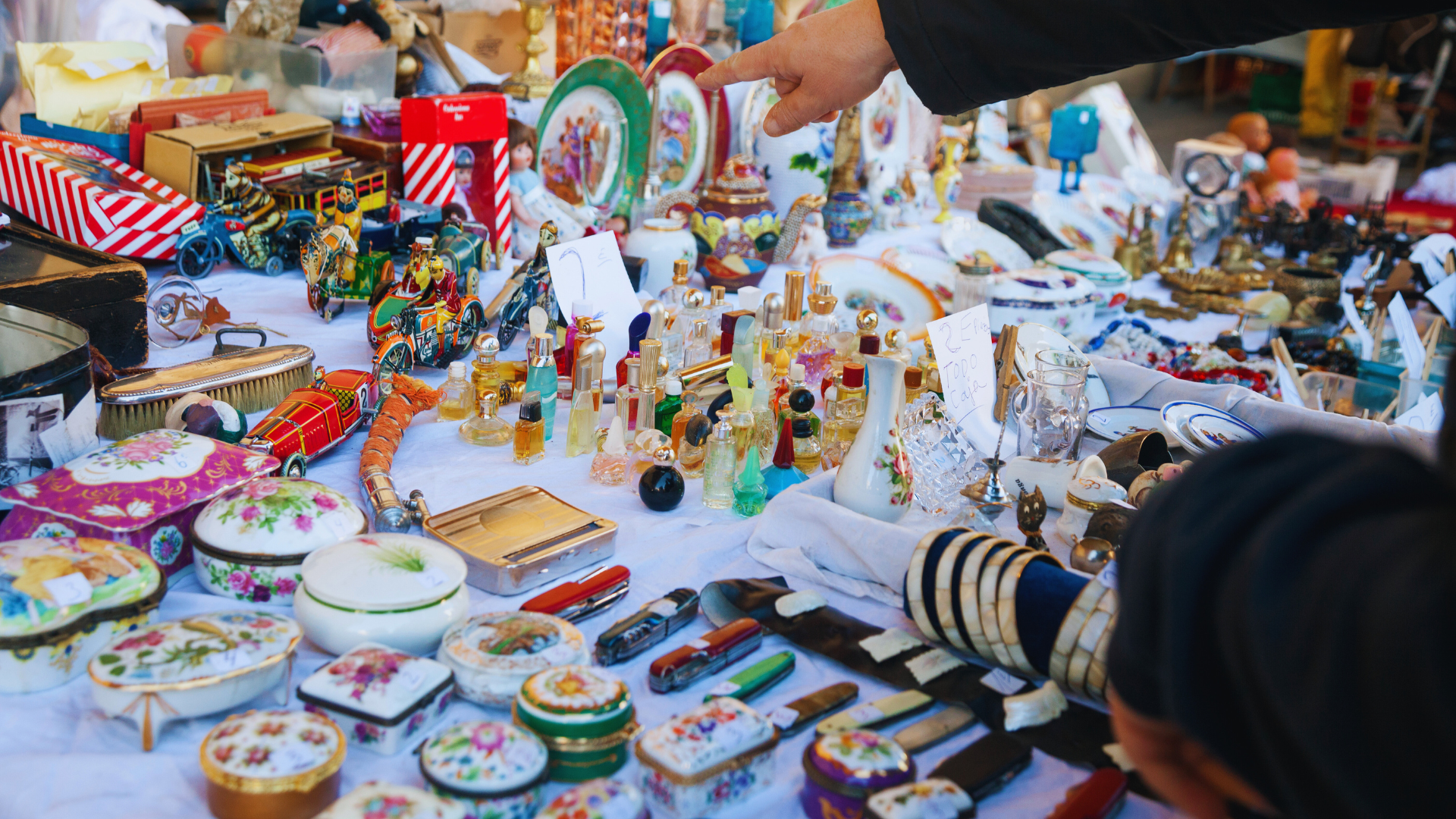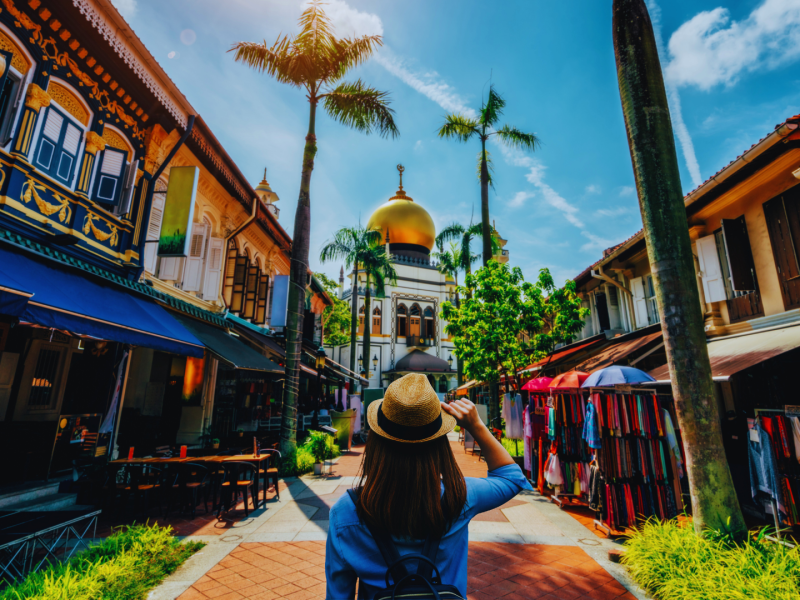Flea markets in European cities serve as vibrant hubs of culture and community, offering a unique glimpse into local traditions and lifestyles. These markets not only provide a platform for artisans and vendors to showcase their goods, but they also foster a sense of connection among residents and visitors alike. From Paris to Berlin, the eclectic mix of antiques, crafts, and food products reflects the rich history and diversity of each locale.
Exploring flea markets can reveal much about a city’s character and its social dynamics. These spaces often act as melting pots where various cultures and generations converge, creating an atmosphere of exchange and creativity. Shoppers can discover hidden treasures and stories behind each item, making the experience both personal and communal.
As they wander through stalls brimming with history and artistry, individuals engage in a cultural dialogue that transcends the mere act of buying and selling. Flea markets are more than just places to find unique items; they are vibrant expressions of local identity and continuity within the rapid changes of urban life.
Historical Roots and Evolution of Flea Markets
Flea markets have a rich history in Europe, evolving from small outdoor sales to significant cultural hubs. Understanding their origins, transformation, and cultural influence provides insight into their role in society.
Origins and Growth Across Europe
Flea markets trace their roots to medieval times when farmers and traders gathered to sell surplus goods. The marché aux puces in Paris emerged in the 19th century, creating a model for other European cities. Initially, these markets catered to lower-income communities, offering affordable goods.
Gradually, they attracted a broader audience. By the early 20th century, their popularity surged, with cities like Berlin and Amsterdam establishing vibrant markets. European flea markets became known for their variety, selling items from antiques to handmade crafts, fostering community engagement and cultural exchange.
Transformation of Second-Hand Trading
The GDR period in East Germany led to a unique evolution of flea markets, where citizens traded goods to navigate economic constraints. These markets emphasized sustainability and creativity, allowing individuals to repurpose items for new purposes.
As consumer culture expanded in the late 20th century, second-hand trading became increasingly popular in Western Europe. Markets like the Rastro flea market in Madrid became hotspots for vintage goods and local crafts. Today, these markets symbolize an alternative to fast fashion, with growing interest in second-hand shopping as a sustainable choice.
Influence of Key Markets on European Culture
Key flea markets have significantly impacted European culture and tourism. The Braderie de Lille in France stands out as one of the largest, drawing thousands annually with its vibrant atmosphere and diverse offerings. This event not only showcases local culture but also fosters community spirit.
Similarly, flea markets have become artistic venues, featuring local musicians, food vendors, and artisans. They play a vital role in cultural preservation by promoting traditional crafts. As influential sites, they reflect the evolving identity of urban spaces across Europe, merging commerce with cultural heritage.
Cultural and Social Significance in European Cities
Flea markets in European cities serve as vibrant hubs of local culture, fostering social interaction and showcasing the creativity of artisans. These markets reflect the unique traditions of each area while providing opportunities for the community to connect.
Diversity of Local Traditions
Flea markets encapsulate the rich cultural tapestry of European cities. Each market often reflects the history and traditions of its location. For example, in Paris, the Marché aux Puces de Saint-Ouen is known for its antiques and vintage finds, while in Barcelona, the Mercat de Sant Antoni highlights local food and crafts.
This diversity promotes the preservation of local customs, as vendors often sell items that represent their heritage. Additionally, flea markets allow visitors to explore regional crafts, collectibles, and unique finds that might not be available elsewhere. This connection to local traditions enriches the cultural experience for both residents and tourists.
Spaces for Social Interaction and Community
Flea markets function as essential spaces for social interaction within communities. They offer a setting where people can meet, share stories, and engage with one another. Vendors often foster relationships with regular customers, creating a sense of belonging and community spirit.
Events and themed markets during holidays or festivals draw larger crowds, encouraging social mixing among diverse groups. Families, friends, and neighbors gather in these lively environments, strengthening local bonds. The informal atmosphere allows for conversations and connections that might not occur in other public spaces.
Creativity, Artisans, and Unique Finds
Local artisans play a crucial role in flea markets, showcasing their creativity and craftsmanship. Handmade goods, from jewelry to home décor, are often featured prominently, attracting those who seek distinctive items.
Artisans benefit from direct engagement with customers, receiving immediate feedback and fostering relationships that promote their work. Additionally, the market’s eclectic offerings encourage discovery, allowing shoppers to stumble upon unique finds that tell a story. This creative exchange supports small businesses and nurtures artistic expression, contributing significantly to the local culture.
Economic and Sustainable Value of Flea Markets
Flea markets play a significant role in local economies while promoting sustainable practices. They serve as hubs for affordable goods and encourage the buying of second-hand items, supporting both shoppers and local vendors.
Impact on Local Economies and Small Businesses
Flea markets contribute substantially to local economies by attracting shoppers and tourists. They provide a platform for small businesses and individual vendors to thrive without the high overhead costs associated with traditional retail.
Local artisans and entrepreneurs can showcase their products, enhancing the diversity of goods available. As customers engage in the shopping experience, vendors benefit from increased foot traffic, leading to higher sales.
Moreover, these markets stimulate job creation in surrounding areas, as they necessitate support services like food vendors and logistics.
Promoting Sustainability and Second-Hand Goods
By emphasizing second-hand goods, flea markets promote sustainability and responsible consumption. Shoppers are encouraged to purchase pre-owned items, which reduces waste and lessens demand for new products.
Many vendors focus on upcycled or vintage goods, turning what might be considered trash into treasure. This approach fosters an appreciation for sustainability while allowing consumers to find unique items.
Additionally, this model supports the circular economy, where items are reused and recycled, benefiting the environment by decreasing the carbon footprint associated with manufacturing new products.
Affordable Goods for Shoppers
Flea markets offer a diverse array of affordable goods, attracting bargain hunters looking for unique items at lower prices. These markets excel in providing access to second-hand and vintage products, which often come at a fraction of retail prices.
Shoppers can find everything from clothing and accessories to home decor and antiques. The ability to negotiate prices further enhances the saving potential, making it an attractive shopping experience.
Flea markets also foster a sense of community, where shoppers can discover local culture while enjoying budget-friendly options that promote social and economic inclusivity.
Most Famous Flea Markets and Their Distinctive Charms
Flea markets across Europe offer unique treasures and vibrant atmospheres. Each market boasts its own character, showcasing everything from vintage clothing to antique furniture. Below are some of the most notable flea markets, each with its distinctive charm.
Marché aux Puces de Saint-Ouen in Paris
Located just north of the capital, Marché aux Puces de Saint-Ouen is one of the largest antique markets in the world. This sprawling market features over 2,500 stalls, offering a diverse selection of vintage items, from clothing to furniture. Visitors often find unique pieces of art, jewelry, and even war memorabilia.
The market is divided into several sections, each with its own theme. Some areas specialize in high-end antiques, while others focus on quirky finds. The atmosphere is lively, with haggling being a common practice.
Portobello Road Market in Notting Hill
Portobello Road Market is famed for its rich history and eclectic offerings. This market is particularly known for its antique section, where visitors can find vintage clothing, jewelry, and unique collectibles. The market spans several blocks, making it a lively destination throughout the week, especially on Saturdays.
Street food vendors add to the vibrant environment, providing local delicacies. The iconic colorful houses of Notting Hill offer a picturesque backdrop. Both locals and tourists enjoy exploring its many stalls, each brimming with distinctive charm.
El Rastro Flea Market in Madrid
El Rastro is Madrid’s most famous flea market, held every Sunday. It features hundreds of stalls selling everything from vintage vinyl records to handmade crafts. Visitors often seek unique clothing, furniture, and collectibles that reflect the city’s culture.
The market stretches through the streets, creating a bustling promenade atmosphere. Haggling is part of the experience here, with vendors enjoying a good negotiation. Known for its vibrant energy, El Rastro attracts both residents and tourists alike.
Other Notable European Flea Markets
Several other flea markets in Europe are worth mentioning for their unique offerings. For example, Mauerpark in Berlin combines a flea market with a lively open-air karaoke scene. In Munich, the giant flea market draws crowds with its vast selection of antiques and vintage items.
Amsterdam’s Vrijmarkt is a lively open market held on King’s Day, showcasing everything from secondhand goods to handmade crafts. Similarly, the Waterloo Flea Market in London and the flea market in Arezzo, Italy, also offer rich selections and cultural experiences, appealing to both collectors and casual shoppers.
Each of these markets contributes to the cultural landscape of their cities, making them essential stops for those exploring European heritage.



